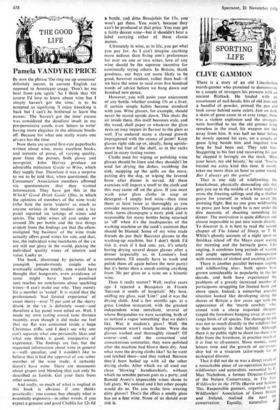CLIVE GAMMON
There is a story of an old Lincolnshire marsh-gunner who promised to demonstrate to a couple of strangers his prowess with an ancient flintlock. He loaded with an assortment of nail-heads, bits of old iron and a handful of powder, primed the pan and took cover behind some osiers. Just on dark a skein of geese came in at easy range, there was a violent explosion and the strangers were horrified to see the old gunner lying senseless in the mud, his weapon ten feet away from him. It was half an hour before he slowly opened his eyes, on a couple of geese lying beside him and inquired how long he had been out. They told him. Staggering to his feet and recovering his gun he slapped it lovingly on the stock. 'Bless your heart, my old beauty,' he said. 'You've treated me extra kind this time. It mostly takes me more than an hour to come round. But 1 always get the goose!'
That is one side of wildfowling. the knockabout, physically demanding side that gets you up in the middle of a bitter night to cross the freezing saltings and dig a shallow grave for yourself in which to await the morning flight. But no one goes wildfowling to prove just how tough he is nor under the dire necessity of shooting something for dinner. The motivation is quite different and almost impossible to put into words directly. To discover it, it is best to read the second chapter of The Island of Sheep, or T. H. White's ghostly account of a night spent on Inishkea island off the Mayo coast waiting for morning and the barnacle geese. Like angling, it combines long periods of waiting and ample opportunity for introspection with moments of violent and exciting action.
There is another parallel between angling and wildfowling also : both sports have grown considerably in popularity in the last decade, and both have experienced the problems of a greatly increased number of participants struggling for limited bank and shore space. Indeed, a somewhat anarchic situation looked like developing along the shores of Britain a few years ago with the appearance of the 'marsh cowboy' who. armed with a cheap imported shotgun, ranged the foreshore banging away at out-of- range birds of all species. The damage he did was not so much directly to the wildfowl but to their security in their habitat. Although there is no public right to shoot (as there is to fish) from the foreshore, in practice much of it is free to all-comers. More money. more leisure time and the growth of ear-owner- ship led to a situation tailor-made for an ecological disaster. That it did not do so was a direct result of a remarkable piece of co-operation between wildfowlers and naturalists, recounted by E. Max Nicholson, a former Director-General of the Nature Conservancy, in The New Wildfowler in the 1970s (Barrie and Jenkins, 70s). Responsible gunners, organised in the Wildfowlers' Association of Great Britain and Ireland, realised the need for conservation. Equally, naturalists of
standing were aware that serious wildfowlers would be their strongest allies if they were approached in the right way.
The first practical test of the alliance was in 1955 on the Humber which was already in danger of becoming a 'burnt-out' estuary from which the wildfowl had been driven away by excessive disturbance. There; by mutual agreement, the Humber Wildfowl Refuge, of more than 3,000 acres, was set up. Now there are twenty-one National Wildfowl refuges as well as many more locally-adminstered regional ones, where geese and ducks can breed undisturbed by irresponsible gunners and bird-watchers. The possibility of a catastrophic decline in wildfowl populations, which seemed so likely in the early 1950s, was averted. (Amongst the oddest by-products of the Wildfowl Refuge movement is that the most important wintering ground for pink-footed geese in England is just a little north-west of Southport Pier.)
It is characteristic of the new climate of co-operation between protectionists and sportsmen that this latest edition of The New Wildfowler contains chapters on guns and cartridges as well as national wildfowl counts, on punt-gunning as well as on the management of reserves. Co-operation must continue to flourish if wildfowling is to remain a viable sport. As Peter Scott says in his introduction, 'There are fewer and fewer places for [the wildfowl] to move to, and much greater care must be taken of those that remain,'















































 Previous page
Previous page